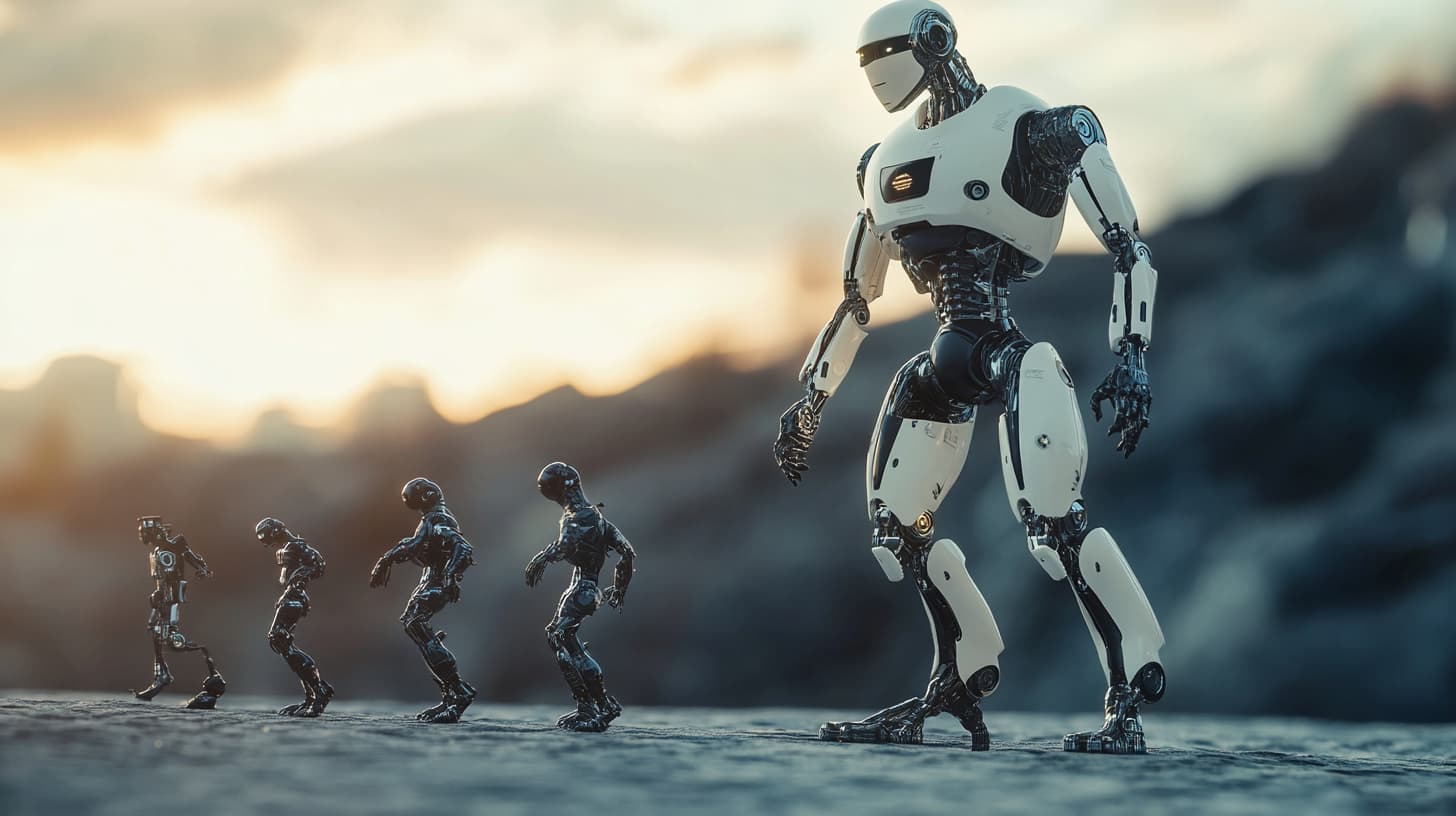Neural Networks as They Were: History and Evolution of Artificial Intelligence

What neural networks used to be
It seems that neural networks appeared recently, but they are already being used extensively at all levels of human detail - from solving scientific problems to developing a walking route through an unfamiliar city. But even today’s AI cannot be called intelligence in the full sense of the word, and its development is still at an early stage. But if you compare what neural networks were like before and what they are like now - the evolution is noticeable. Even more noticeable than, probably, the creators expected. What artificial intelligence was like, what it is now and what it may be like - we will talk about in the article.
The main differences between the first AI models and modern ones
If you trace the history of the development of artificial intelligence, we will notice the following differences:
-
Size - the first networks were small, with the simplest architecture. Accordingly, there were no more than two layers of “neurons”, and the range of tasks to be solved was small.
-
Training costs. Neural networks now and in the past are a big expense of computing resources, but the first AI worked on machines that were inaccessible to most.
-
The first models were of the same type, but now there are several types, each of which is designed to solve its own range of problems.
-
Complexity of training. The first models had to be trained for a long time, since the amount of data was limited and all information required careful preparation. Thanks to the Internet and the development of digital technologies, it is possible to train AI faster and easier.
-
Scope of application. The first algorithms were used purely for academic purposes. Modern AI is used everywhere, right down to the household level.
What has changed
A sharp leap in the development of neural networks is due to progress in the field of digital technologies. In particular, the development of cloud technologies and the emergence of powerful graphics processors, with the help of which AI training has accelerated many times. In addition, the Internet provides much more information for training.
Different types of AI have appeared, and accordingly, the scope of their application has expanded. More use means more efficient training, because even the chatbot’s dialogues with users also improve AI.
The very first neural network
What are neural networks now? Multifunctional, applicable in all areas of human activity, powerful. But the first neural network was not like that at all.
The history of AI began back in 1943, when mathematicians Walter Pitts and Warren McCullough presented a mathematical model of an electronic “neuron”. It was this model that became the basis for further developments, but only theoretical ones so far.
The first neural network appeared only in 1958. Its name is perceptron. It was a network with a simple architecture that solved the simplest classification problems. Perceptron was developed by neurophysiologist Frank Rosenblatt, and in 1960 he presented the first neurocomputer, the operation of which was based on perceptron algorithms. At that time, the “neurons” of the computer called “Mark-1” consisted of resistors and vacuum tubes.
But that was all - the Mark-1 neural network had only two layers, so it could not solve complex problems, and it was impossible to make it more complex, purely technically.
Therefore, the topic of artificial intelligence was forgotten - until its second heyday in the 80s, when the backpropagation method appeared, which became the classic method of machine learning. But even at that time, the technical capabilities were insufficient.
And only in the late 2000s, with the advent of sufficient computing power (that is, gaming video cards), the real evolution of artificial intelligence began, which resulted in ChatGPT, Midjourney, and so on.
What will happen next
Of course, neural networks now and before are completely different capabilities and even operating principles. But what will happen next? An ambitious project of humanity has become AGI, artificial intelligence, which will solve problems in the same way as a person does, only much faster. That is, real AI.
True, its creation will require completely different technologies and computing power. Two obvious paths of AI development are being considered: neuromorphic chips and quantum computers. Time will tell which of them will be more suitable. In any case, both technologies are only at the very beginning of their development, and for now we cannot count on the emergence of AI that will work exactly the same way as the human brain. At least, it is impossible to create such with existing technologies. But imitations are excellent.
Results
Someday, artificial intelligence will replace human intelligence, at least in certain areas. Researchers, scientists, developers are actively improving existing neural networks. And now they have become much more multitasking, more perfect, faster than before. But everything rests on technical limitations - for a new breakthrough in the “evolution” of neural networks, new technologies are needed.

